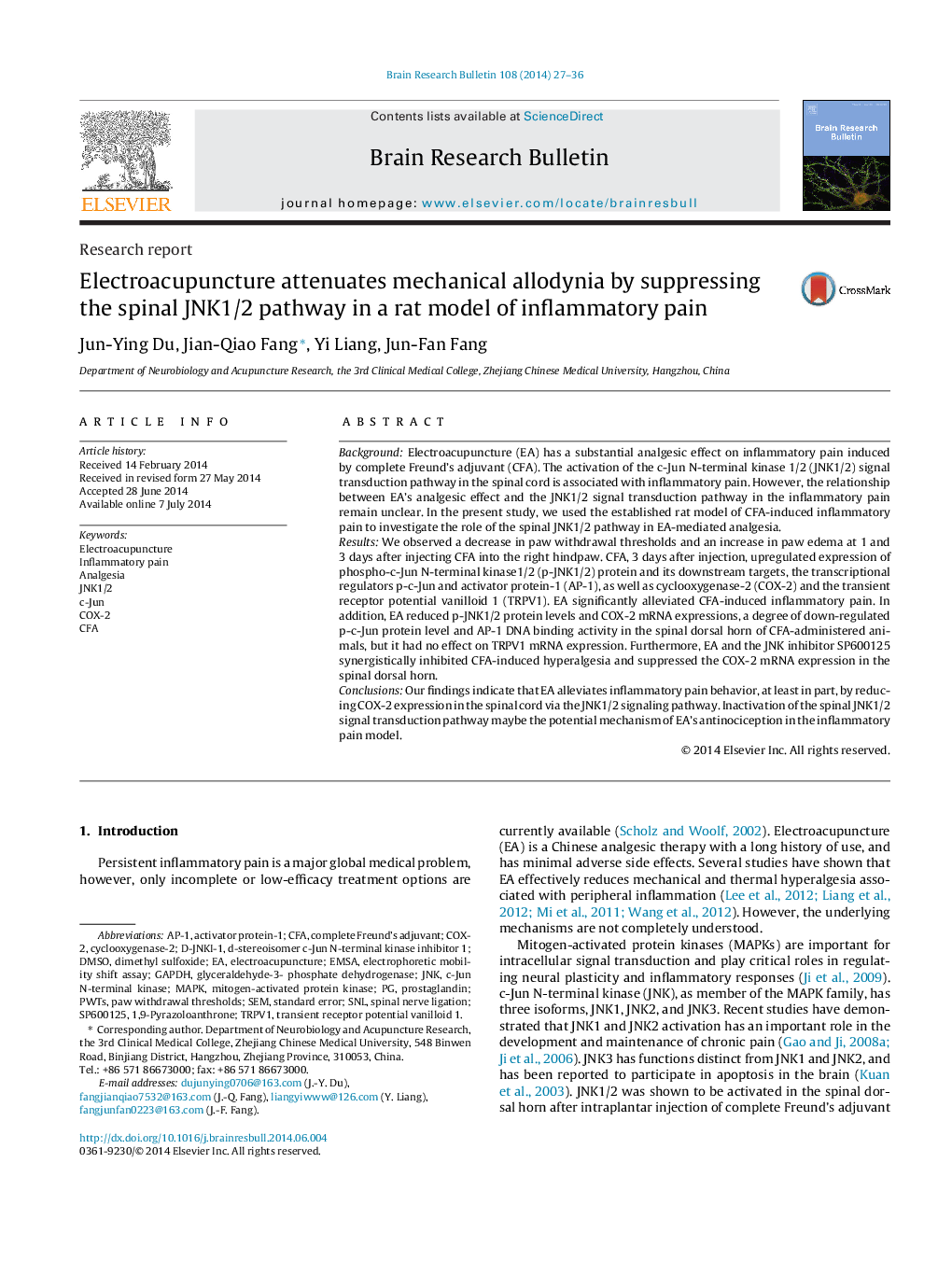| کد مقاله | کد نشریه | سال انتشار | مقاله انگلیسی | نسخه تمام متن |
|---|---|---|---|---|
| 6261759 | 1613247 | 2014 | 10 صفحه PDF | دانلود رایگان |

- CFA induces a decrease in paw withdrawal thresholds and an increase in paw edema.
- EA increases the paw withdrawal thresholds without affecting the paw edema.
- EA reduces p-JNK1/2 and its downstream targets (p-c-jun, AP-1DNA activity, COX-2).
- EA combines with a JNK1/2 inhibitor has a synergistic effect.
- EA alleviates inflammatory pain, at least in part, by reducing COX-2 expression via the JNK1/2 pathway.
BackgroundElectroacupuncture (EA) has a substantial analgesic effect on inflammatory pain induced by complete Freund's adjuvant (CFA). The activation of the c-Jun N-terminal kinase 1/2 (JNK1/2) signal transduction pathway in the spinal cord is associated with inflammatory pain. However, the relationship between EA's analgesic effect and the JNK1/2 signal transduction pathway in the inflammatory pain remain unclear. In the present study, we used the established rat model of CFA-induced inflammatory pain to investigate the role of the spinal JNK1/2 pathway in EA-mediated analgesia.ResultsWe observed a decrease in paw withdrawal thresholds and an increase in paw edema at 1 and 3 days after injecting CFA into the right hindpaw. CFA, 3 days after injection, upregulated expression of phospho-c-Jun N-terminal kinase1/2 (p-JNK1/2) protein and its downstream targets, the transcriptional regulators p-c-Jun and activator protein-1 (AP-1), as well as cyclooxygenase-2 (COX-2) and the transient receptor potential vanilloid 1 (TRPV1). EA significantly alleviated CFA-induced inflammatory pain. In addition, EA reduced p-JNK1/2 protein levels and COX-2 mRNA expressions, a degree of down-regulated p-c-Jun protein level and AP-1 DNA binding activity in the spinal dorsal horn of CFA-administered animals, but it had no effect on TRPV1 mRNA expression. Furthermore, EA and the JNK inhibitor SP600125 synergistically inhibited CFA-induced hyperalgesia and suppressed the COX-2 mRNA expression in the spinal dorsal horn.ConclusionsOur findings indicate that EA alleviates inflammatory pain behavior, at least in part, by reducing COX-2 expression in the spinal cord via the JNK1/2 signaling pathway. Inactivation of the spinal JNK1/2 signal transduction pathway maybe the potential mechanism of EA's antinociception in the inflammatory pain model.
Journal: Brain Research Bulletin - Volume 108, September 2014, Pages 27-36